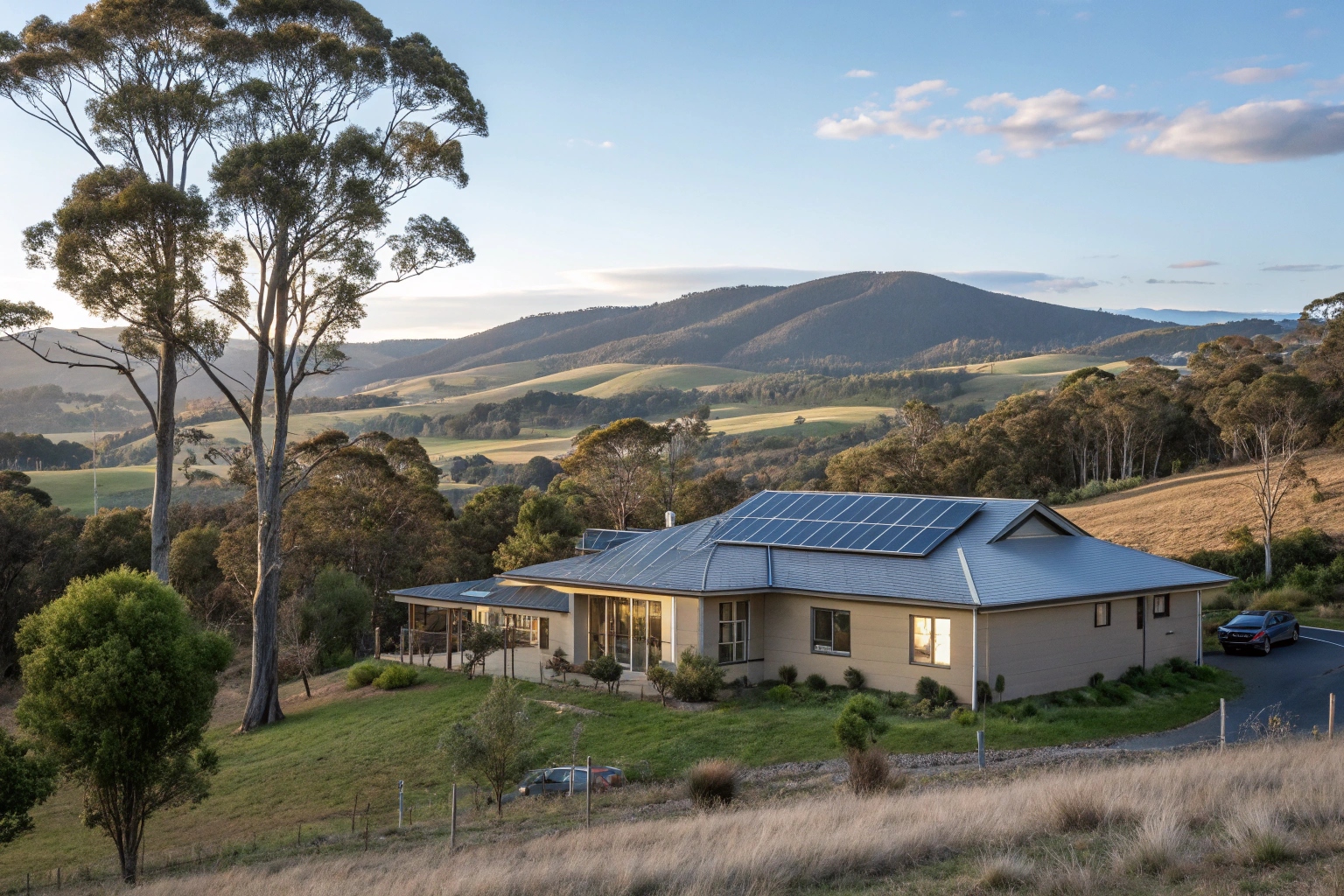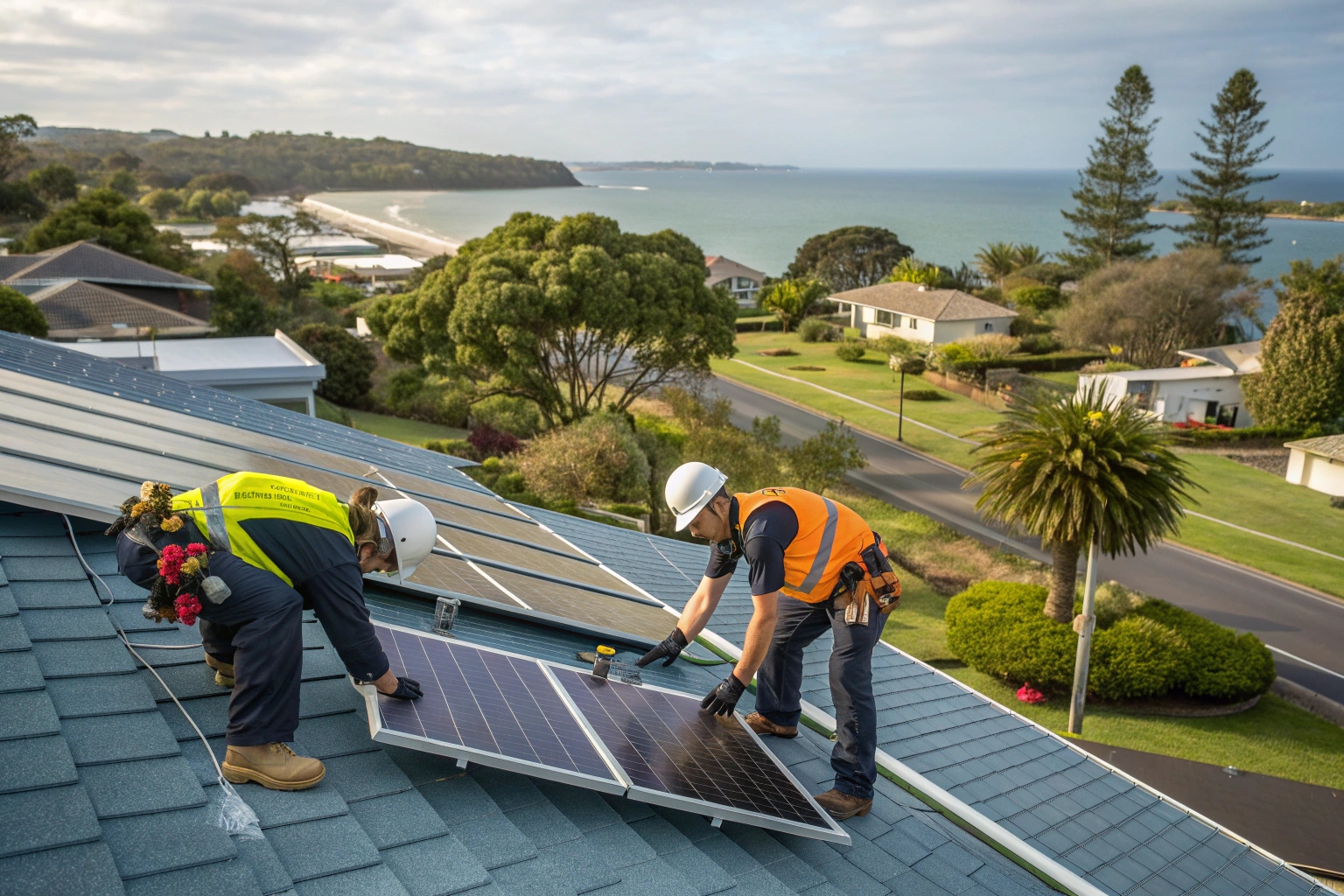
Your Local Solar Energy Company in Hobart
We’re a locally-based solar energy company serving Greater Hobart and surrounding areas with years of experience installing systems across Tasmania. Our team knows Hobart’s unique conditions — from handling wind exposure on coastal properties to optimising panel angles for maximum winter performance.
Every installer on our team holds CEC accreditation, which means they’ve met the Clean Energy Council’s strict training and safety standards. We don’t use subcontractors or cut corners. When we install your system, it’s our qualified team doing the work from start to finish.
We’ve completed installations across Sandy Bay, Battery Point, Mount Nelson, West Hobart, Kingston, Glenorchy, and throughout the eastern shore. We understand local building considerations, work directly with TasNetworks on grid connections, and respond quickly when customers need support.
Being local means we’re here after installation. You’re not calling a mainland call centre when you have questions — you’re talking to the same team that installed your system. That’s the advantage of choosing a Hobart solar energy company that’s invested in this community.



Tasmania’s Solar Potential and Climate Advantages
Tasmania’s clean air and moderate temperatures create better conditions for solar than most people realise. Solar panels actually lose efficiency when they overheat in extreme heat, which means our cooler climate helps your system produce more power per panel throughout the year. Hobart receives plenty of sunshine during the summer months, and even winter days contribute to your annual energy production.
Tasmania’s Solar Advantages:
- Cooler temperatures mean panels operate at peak efficiency without heat-related power loss
- Clean air allows more sunlight to reach your panels compared to areas with pollution or haze
- Moderate climate reduces weather-related wear on equipment, extending system lifespan
- Strong solar incentives through federal STCs and state battery programs
- Year-round generation keeps your system producing energy even during cloudier winter months
Your solar system generates surplus energy during sunny periods that offset cloudier stretches. Over a full year, Hobart homes see strong returns on solar investment that translate to significant electricity bill reductions.
Solar System Types Available in Hobart
| Grid-Connected Systems | Hybrid Systems | Off-Grid Systems |
|---|---|---|
| The most popular choice for Hobart homes. Your solar panels feed excess power back to the grid, earning feed-in credits while you draw grid power when needed. Lower upfront costs and a reliable electricity supply make this the practical option for most households. | Combines grid connection with battery storage for the best of both worlds. You get grid reliability plus stored solar energy for nights and outages. Batteries charge during the day from your panels, then power your home after sunset. Growing in popularity as battery prices drop. | Complete energy independence with no grid connection. Requires larger battery banks and careful system sizing to cover all your power needs year-round. Best suited for rural properties beyond grid reach or those wanting total self-sufficiency. Higher initial investment, but no ongoing electricity bills. |
Each system type suits different situations and budgets. We’ll recommend the right option based on your location, energy usage, and goals for solar energy independence.

Real Performance in Hobart Conditions
Solar systems in Hobart generate strong energy production year-round, with peak output during summer months and reduced but steady generation through winter. Your system keeps working even on cloudy days — modern panels still produce power when the sun’s behind clouds, just at a lower capacity.
Panels mounted on north-facing roofs at appropriate angles capture optimal sunlight throughout the day. East-west configurations work well for households with morning and evening usage patterns, spreading production across more hours.
Winter production naturally drops compared to summer, but your system compensates by generating surplus energy during sunnier months that offset those quieter periods. Over a full year, Hobart’s climate delivers solid returns that translate to significant electricity bill reductions for homes and businesses alike.
Frequently Asked Questions
This depends on your household consumption. We analyze your power bills to recommend the right size. Small homes typically need 3-5kW, medium homes work well with 6-8kW, and larger households benefit from 10kW or more.
Most residential installations are completed in 1-2 days. We handle all approvals and grid connection paperwork with TasNetworks, which typically takes 2-4 weeks to process before your system goes live.
Standard grid-connected systems shut down during outages for safety reasons. If you want backup power, we can install battery storage that keeps selected circuits running when the grid goes down.
Very little. Hobart’s regular rainfall naturally cleans panels. We recommend an annual visual inspection to check for debris or damage. Most systems operate maintenance-free for years.
Yes, solar panels generate power year-round in Hobart. Winter output drops to 40-60% of summer levels but still provides meaningful electricity bill reductions.
Research shows homes with solar sell faster and for higher prices than comparable properties without solar. Buyers value the lower running costs and environmental benefits solar provides.
Ready to Start Saving with Solar Energy?
Your solar journey starts with a simple conversation. We’ll assess your property, review your power bills, and show you exactly how much you could save with solar energy in Hobart.
Here’s what happens next:
- Free, no-obligation consultation at your property
- Detailed system design tailored to your roof and energy usage
- Transparent pricing with all available rebates included
- Professional installation by CEC-accredited teams
- Ongoing support long after your system goes live
Hundreds of Hobart families are already enjoying lower power bills and energy independence. Your home could be next.

